These wonderful plants in the family Campanulaceae (bellflowers), which are native throughout the northern Northern Hemisphere, have many common names including harebells, round-leaf harebells, Scottish bluebells, bluebell bellflower, and witch’s thimble, amongst others. Even before I knew what they were called I loved these plants (which are btw, the floral emblem of Sweden), because during my rock climbing days they were frequent companions on belay ledges and in cracks in the rock, and their cheerfully colored flowers, symmetrical yet unusually shaped, seemed to carry a bit of the sky onto the rock.
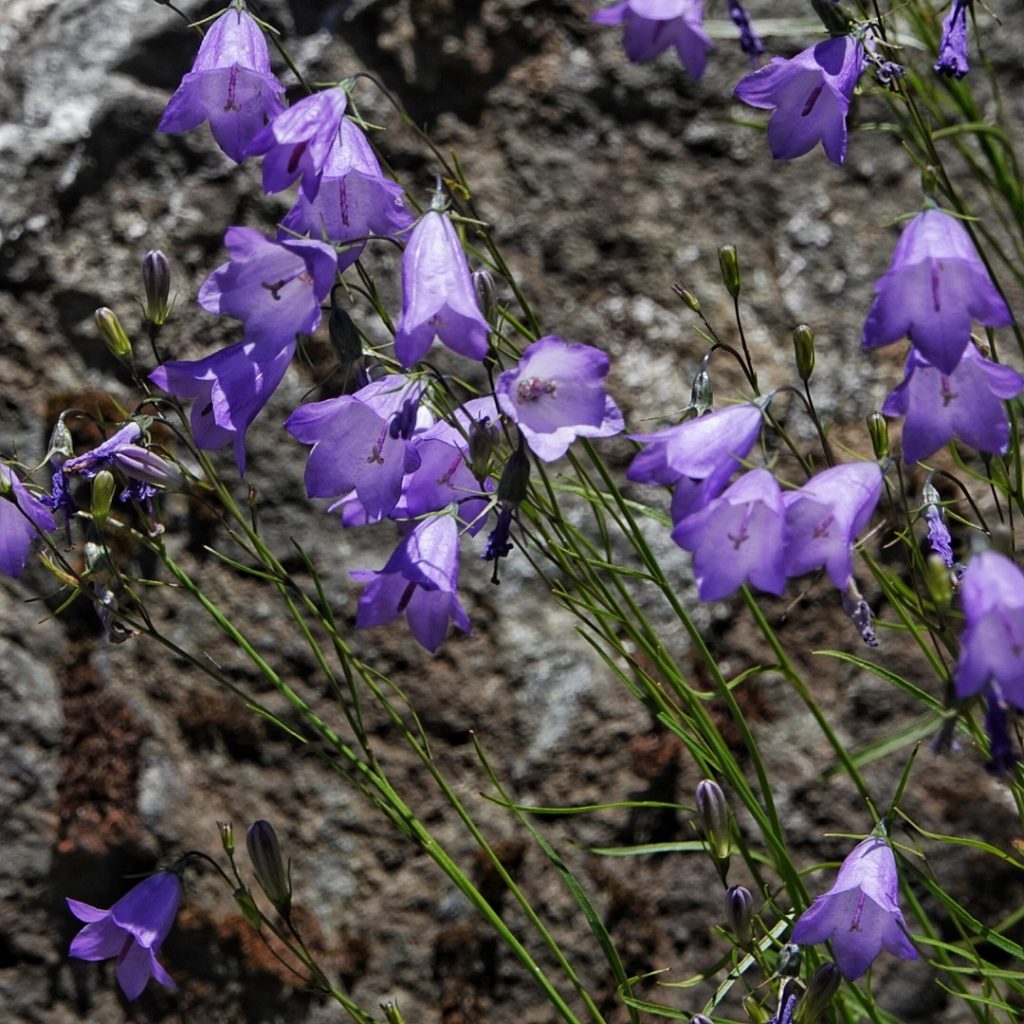
Speaking of their color, Campanula rotundifolia was used to make a blue dye for tartans in the Highlands of Scotland, where it is an abundant species. The colloquial name Scottish harebell may simply allude to this plant being common in areas frequented by hares, or it may come from the belief that witches could utilize its sap to turn themselves into hares. Other cultures have certainly believed it has magical qualities, as evidenced by the Navajo rubbing it on their body to protect against witchcraft and evil spirits, as well as for protection while hunting, and as a ceremonial fumigant. And the Haida thought picking the flowers would cause rain, and called them ‘blue rain flowers’.
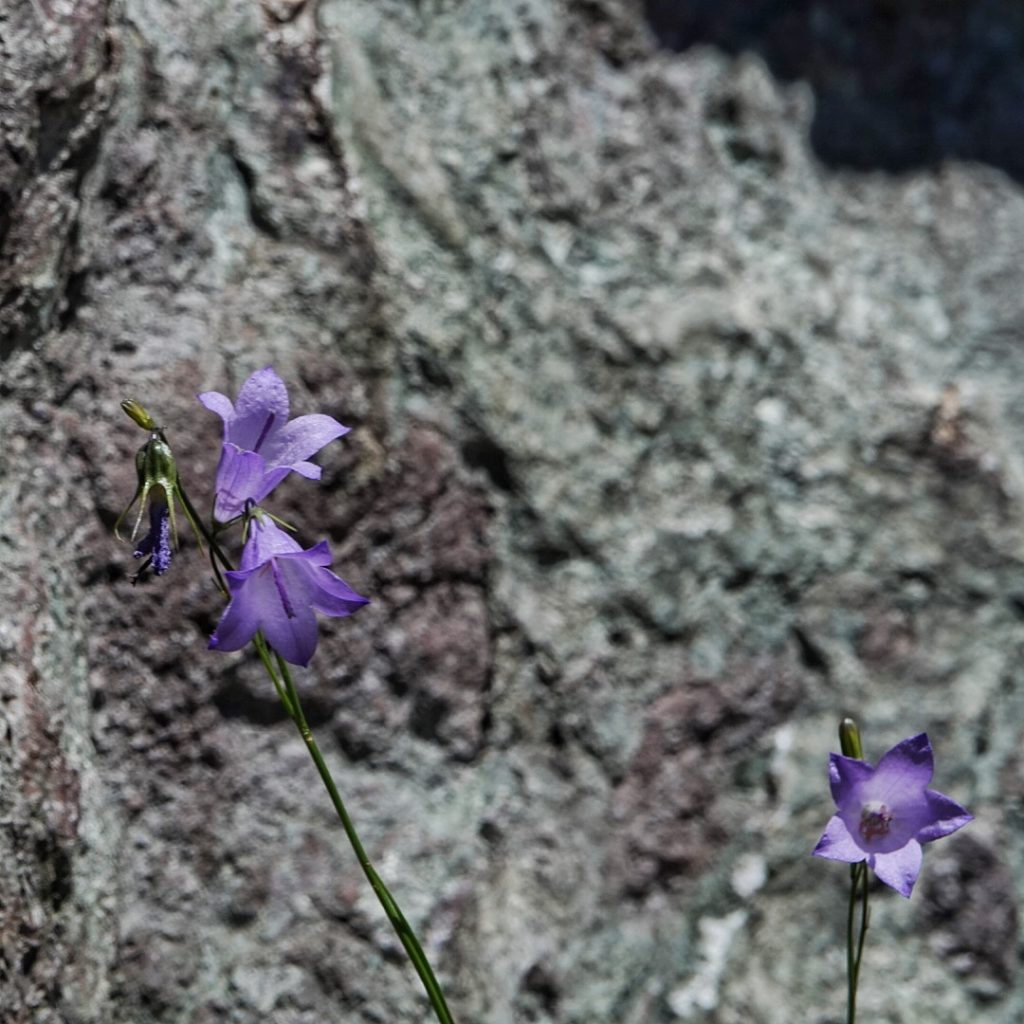
The plant also has more ‘material’ purposes. Some Europeans ate the leaves in salads, although it doesn’t appear to have been a food source for indigenous North Americans. But they did have medicinal uses for Campanula rotundifolia, treating ailments of the eyes, ears, heart, and lungs with preparations from the roots, which were also utilized as a poultice to slow the bleeding and promote healing of wounds.
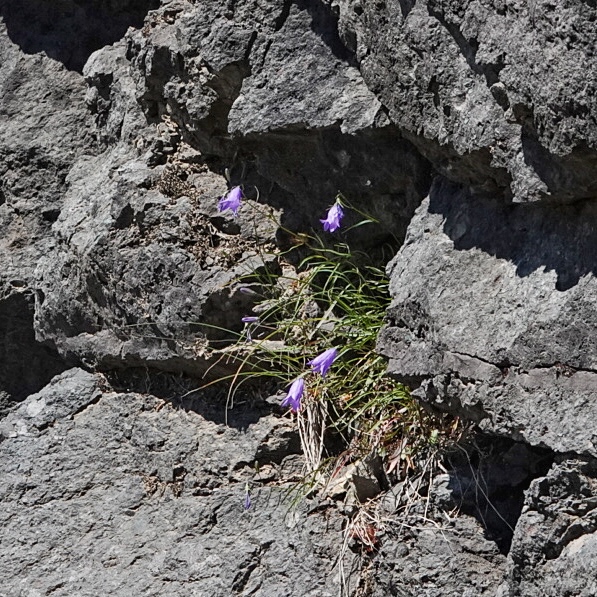
The plant is becoming popular in native plant gardens because it tolerates poor and rocky soil, and the tiny seeds can be collected from the plants in the fall and sown directly onto bare ground in the spring. Plants can also be divided and replanted. It will spread over time, but does so slowly so it is easily managed. It certainly seems to me like these beautiful flowers would be a great addition to any wildflower garden!
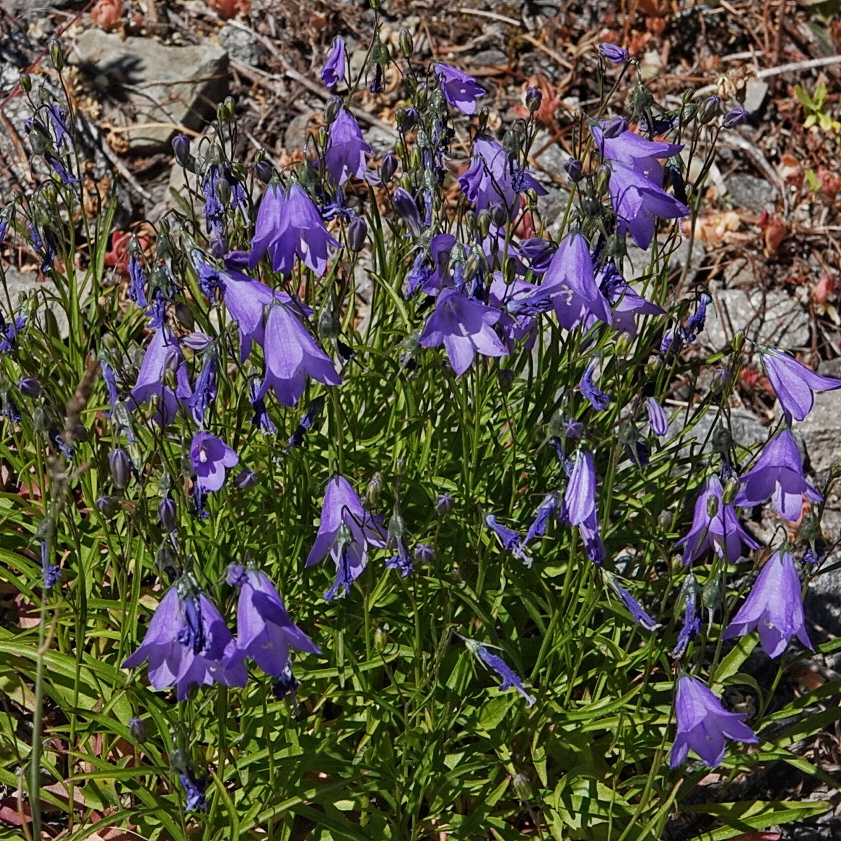
Description-Medium sized (up to 20” tall) perennial forming clumps of erect, usually branched stems, with a few to many fairly large, blue to purplish blue bell-shaped flowers; basal leaves are small and round, and usually wither before flowering; stem (cauline) leaves are linear, sessile, and up to 3” long; bell-shaped flowers up to 30mm long, pendent to nodding, 5 lobes pointed to slightly rounded and 1/3 of the length of the flower; style lobed, nearly as long as the flower tube.
Similar species– Other Campanula have lobes at least half of the length of the flower; other Campanulaceae have irregular lobes; Gentians have erect flowers with an extended calyx.
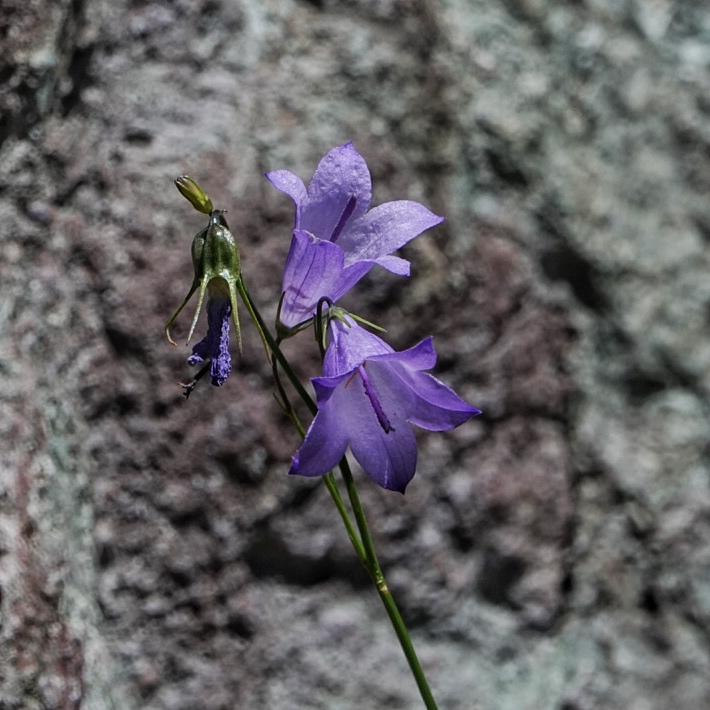
Habitat-Open rocky areas, forest openings, damp slopes, up to 10,000’ elevation.
Range-Circumboreal; found region wide in appropriate habitat, except absent from the most arid parts of the interior.
Reproductive timing-June-September; usually pollinated by bees but also does self-fertilize.
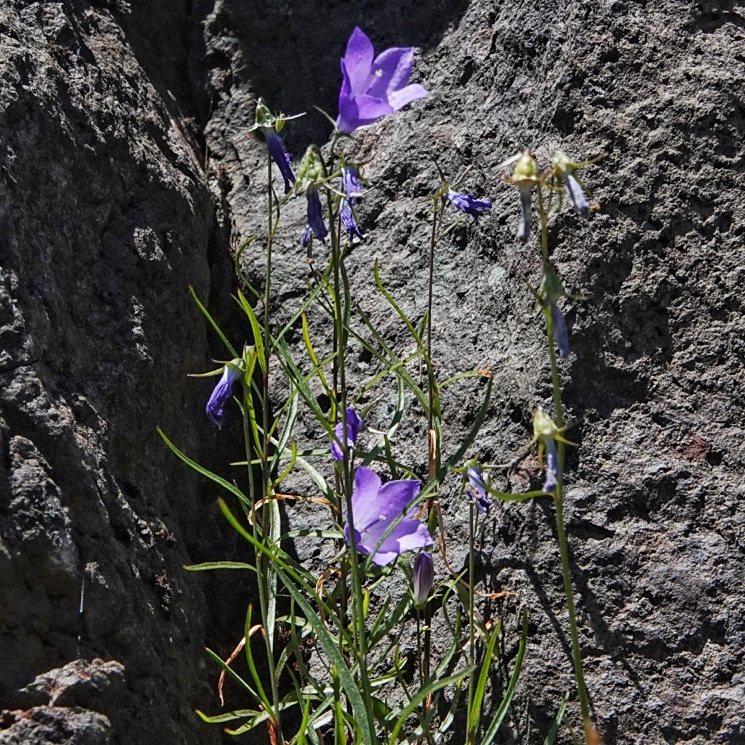
Eaten by-Utilized as a larval host by leaf mining flies in the genera Liriomyza and Ophiomyia, and leaf mining moths in the genus Marmara; good source of nectar and pollen for bumble bees and other native, mostly solitary, bees, as well as for Syrphid flies.
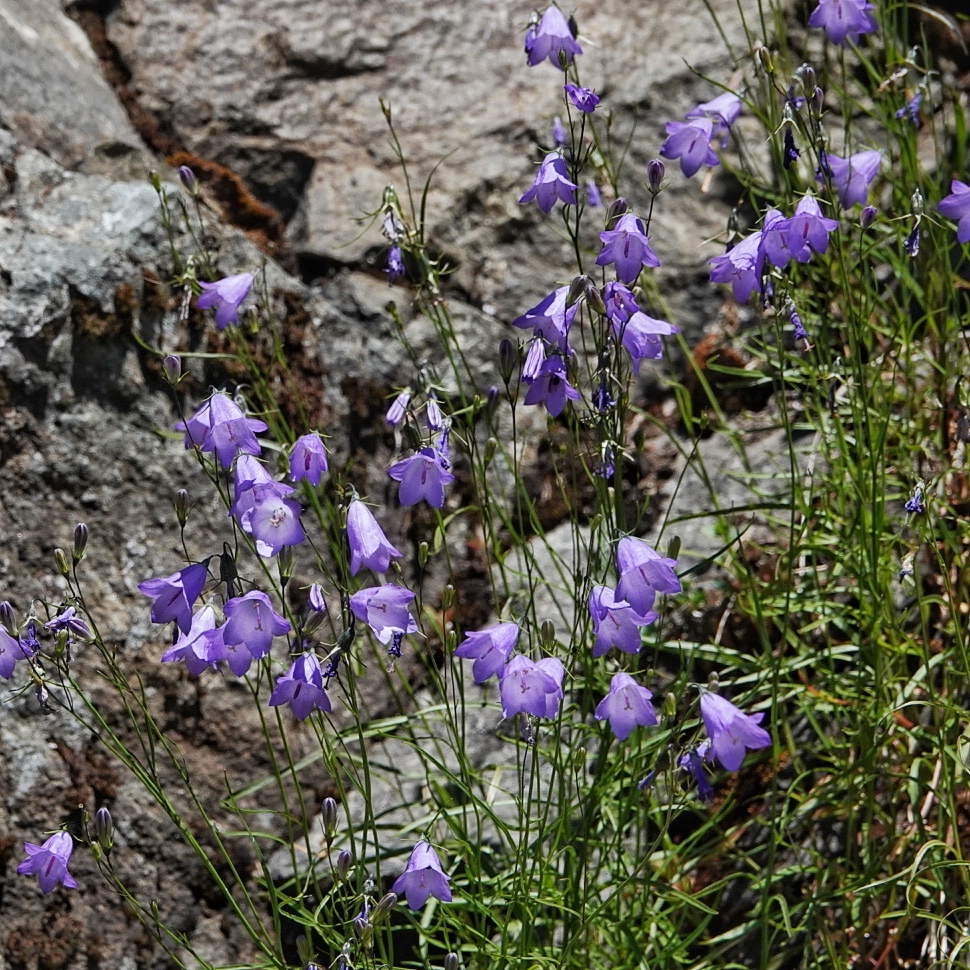
Etymology of names–Campanula is from the Latin for ‘little bell’, and refers to the shape of the flowers. The specific epithet rotundifolia is from the Latin for ‘round leaves’, and references the shape of the basal leaves.
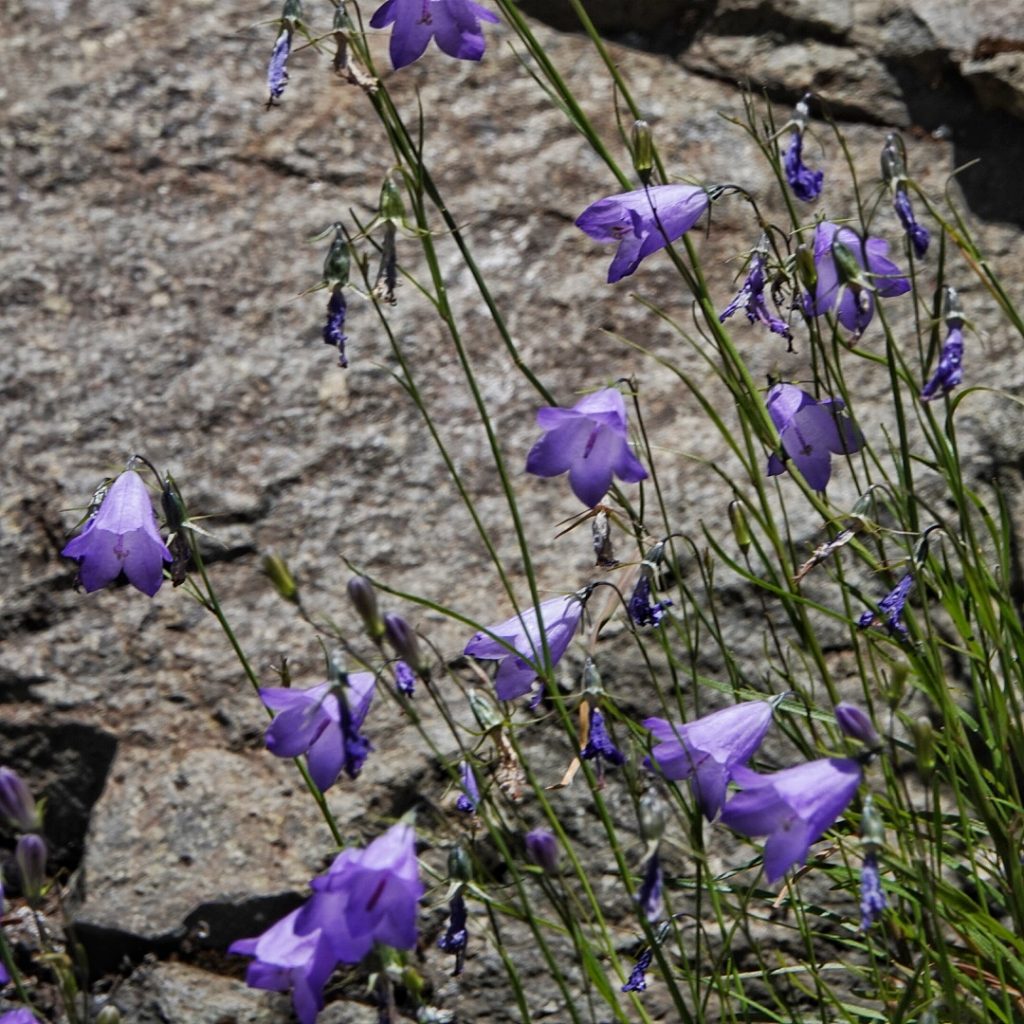
https://www.fs.fed.us/wildflowers/plant-of-the-week/campanula_rotundifolia.shtml
OregonFlora Campanula rotundifolia
https://cwf-fcf.org/en/resources/encyclopedias/flora/harebells.html
https://www.wnps.org/native-plant-directory/69-campanula-rotundifolia
BRIT – Native American Ethnobotany Database
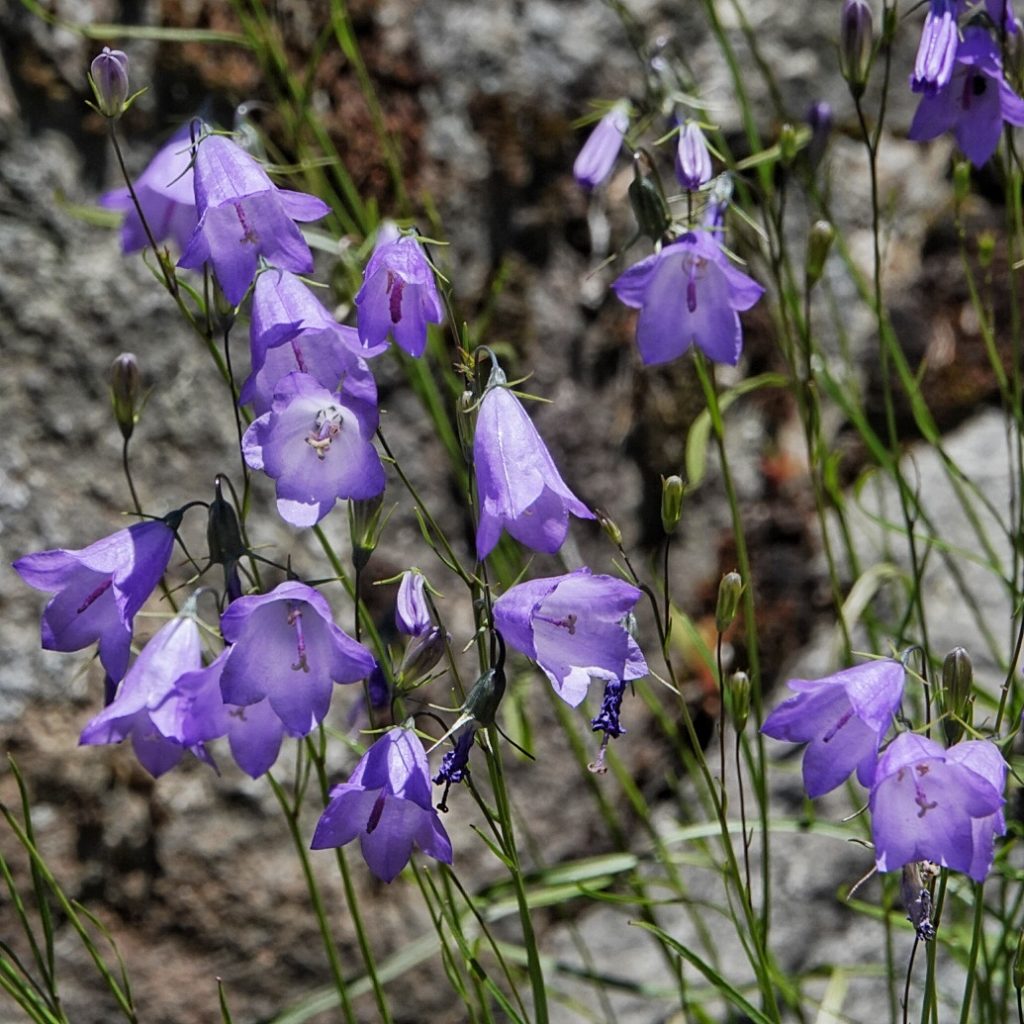
1 thought on “Campanula rotundifolia”